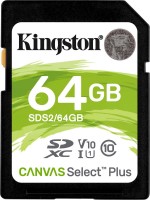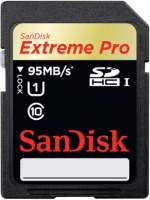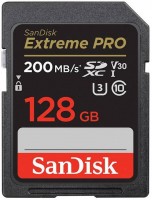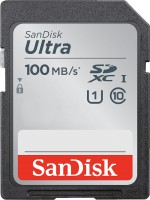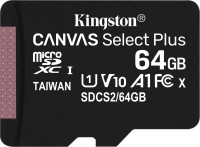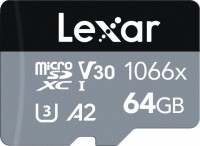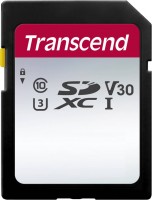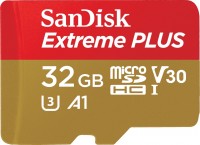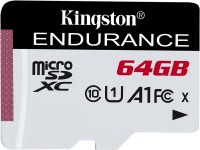Memory Cards SanDisk
All Memory Cards Advanced filters → |
You might be interested in
Articles, reviews, useful tips
All materials
Five fast UHS-II class SD cards for advanced photographers and videographers
Fastest SD cards for reportage photography, 4K and 8K video

What are NM Cards? The miniaturization effect in action
A new word in the form factor of flash drives with a bet on compactness from Huawei

MicroSD, SD or CompactFlash? How to choose the right memory card for your smartphone, camera, camcorder and other equipment
We understand what formats of memory cards exist and where they are used

Five microSD cards with lifetime warranty
Reliable and durable microSD storage in popular 128 GB capacity

Camera Memory Card Guide
What memory cards are used in modern cameras and how do they differ? Let's figure it out
Memory Cards: specifications, types
Type
General type of memory card.
— SD (Secure Digital). One of the most popular types of memory cards nowadays. They have a size of 32x44 mm and mechanical write protection — in the form of a slider. Support for SD cards is practically the standard for modern laptops and digital cameras, and such media are also very common in other devices (except for the most compact ones, where a smaller version is used — microSD ; it is d...escribed below). At the same time, we note that today this type includes three varieties:
— miniSD, miniSDHC. One of the smaller varieties of SD cards that preceded microSD (HC). Nowadays, it is considered completely obsolete and has practically fallen into disuse.
— CompactFlash. One of the first memory card formats on the market. Includes two formats — CompactFlash Type I and CompactFlash Type II. They differ in read / write speed and size — Type II is faster and has a thickness of 5 mm (Type I — 3.3 mm with the same length and width of 42x36 mm). Due to this, a Type I card can be used with a Type II reader, but not vice versa. Despite its venerable age, this format is still popular in photographic equipment due to decent speeds and volumes (up to 128 GB); The main disadvantage is the large size compared to other formats.
— CFast 2.0. High-performance drives for fast handling of large amounts of data. CFast 2.0 standard cards are the size of Compact Flash flash drives (42 x 36 mm), at the same time they have even more impressive read and write speeds (over 500 Mbps). Drives of this class excel when recording high-bitrate video in resolutions up to 8K, as well as in the genre of reportage photography with high-speed burst shooting in RAW. The amount of memory for CFast 2.0 flash drives can exceed 1 TB. Compatibility with memory cards of this standard is implemented in individual copies of top-end cameras and camcorders.
xD-Picture. A standard developed by Olympus and Fujifilm and used primarily in their digital cameras. The main feature of these cards is the lack of a memory controller — thanks to this they are reliable, compact (20x25 mm) and have low power consumption. On the other hand, the volume of such cards is low (up to 2 GB), the reading speed is also quite low, and they cost several times more than similar microSD media (including HC and XC). As a result, even the creators themselves are gradually shifting the focus towards other types of cards.
— memorystick. A proprietary standard developed by Sony specifically for its equipment back in 1998. It is closed, almost never used in devices from other manufacturers. It was widely used until the early 2010s, when Sony began to gradually move to the common SD standard. Nowadays, Memory Stick support is extremely rare, mainly in outdated devices.
Let's note that in this case cards of both the original form factor (50x21x2.8 mm) and Duo cards with reduced dimensions (31x20x1.6 mm) can be meant. The third size, micro, is placed in a separate paragraph (see below). However, all these form factors are compatible through the simplest adapters.
— Memory stick micro. The smallest version of the Memory Stick standard. For more information about this standard, see above, but here we note that Memory Stick micro (also known as M2) have dimensions of 15x12.5x1.2 mm.
— XQD. The successors of CompactFlash cards, developed by the CompactFlash Association specifically for devices that require high read and write speeds, in particular cameras and camcorders — the practical write speed reaches 125 Mb / s, and there is evidence that this is not the limit. At the same time, this card appeared relatively recently and is only gaining popularity. It has rather large dimensions — 39x30x4 mm, larger than SD, although it is somewhat inferior to CompactFlash.
— cfexpress. Incredibly fast high-capacity drives with an eye for long continuous recording in intensive mode. They are the best suited for shooting video in 4K resolution and higher with a frame rate of 120 fps. Advanced instances of the series provide write and read speeds of over 1 Gbps. Also, the cards of the line have resistance to damage during falls and high bending strength. There are two types of CFexpress drives: Type A with dimensions of 20x28x2.8 mm and Type B with dimensions of 38.5x29.8x3.8 mm.
— SxS. Memory card format jointly developed by Sony and SanDisk for professional video applications. It uses the PCI Express interface, which makes it possible to install such cards directly into the expansion card slot on a computer and laptop. It also has a high data transfer rate — up to 2.5 Gbps at the peak.
— PS Vita Card. A specialized memory card format designed, as the name suggests, for PlayStation Vita handheld game consoles. Created by Sony to replace UMD discs, not used by other manufacturers. It is proprietary, incompatible with universal standards like SD. Cards are available in capacities from 4GB to 64GB.
— Nano memory. A type of memory card introduced in 2018 by Huawei and mainly used in Huawei smartphones. Also known colloquially as nano SD, although this designation is technically incorrect. The size (area) of such a carrier is 45% smaller than that of popular microSD cards, while Nano Memory cards are identical in size and pin arrangement to nanoSIM SIM cards. This simplifies the use of combined slots in smartphones (suitable for both a SIM card and a memory card). As for the characteristics, initially for Nano Memory volumes up to 256 GB and read speeds up to 90 MB / s were announced; if this standard proves successful, these numbers can be expected to increase.
— SD (Secure Digital). One of the most popular types of memory cards nowadays. They have a size of 32x44 mm and mechanical write protection — in the form of a slider. Support for SD cards is practically the standard for modern laptops and digital cameras, and such media are also very common in other devices (except for the most compact ones, where a smaller version is used — microSD ; it is d...escribed below). At the same time, we note that today this type includes three varieties:
- Original SD standard. It supports up to 4 GB and relatively low speeds, which is why it is considered obsolete and rarely used. On the other hand, such cards can be used in almost all modern SD-card readers.
- SDHC. An evolution of the original SD standard. The maximum capacity has been increased to 32 GB, and support for high-speed UHS bus (see "UHS Class") is possible, although this support is not required. SD HC cards can be used in card readers of this format, as well as in devices for newer SDXC.
- SDXC. The newest SD card standard in common use today. Allows you to create media up to 2 TB; in addition, it was in this standard that the UHS bus was first introduced (after which it began to be used also in SDHC cards). In addition to card readers for this format, such media can also work with devices for SDHC — however, only if the card is formatted in the FAT32 file system, while by default SDXC uses the exFAT system.
- original microSD;
- microSDHC;
- microSDXC;
— miniSD, miniSDHC. One of the smaller varieties of SD cards that preceded microSD (HC). Nowadays, it is considered completely obsolete and has practically fallen into disuse.
— CompactFlash. One of the first memory card formats on the market. Includes two formats — CompactFlash Type I and CompactFlash Type II. They differ in read / write speed and size — Type II is faster and has a thickness of 5 mm (Type I — 3.3 mm with the same length and width of 42x36 mm). Due to this, a Type I card can be used with a Type II reader, but not vice versa. Despite its venerable age, this format is still popular in photographic equipment due to decent speeds and volumes (up to 128 GB); The main disadvantage is the large size compared to other formats.
— CFast 2.0. High-performance drives for fast handling of large amounts of data. CFast 2.0 standard cards are the size of Compact Flash flash drives (42 x 36 mm), at the same time they have even more impressive read and write speeds (over 500 Mbps). Drives of this class excel when recording high-bitrate video in resolutions up to 8K, as well as in the genre of reportage photography with high-speed burst shooting in RAW. The amount of memory for CFast 2.0 flash drives can exceed 1 TB. Compatibility with memory cards of this standard is implemented in individual copies of top-end cameras and camcorders.
xD-Picture. A standard developed by Olympus and Fujifilm and used primarily in their digital cameras. The main feature of these cards is the lack of a memory controller — thanks to this they are reliable, compact (20x25 mm) and have low power consumption. On the other hand, the volume of such cards is low (up to 2 GB), the reading speed is also quite low, and they cost several times more than similar microSD media (including HC and XC). As a result, even the creators themselves are gradually shifting the focus towards other types of cards.
— memorystick. A proprietary standard developed by Sony specifically for its equipment back in 1998. It is closed, almost never used in devices from other manufacturers. It was widely used until the early 2010s, when Sony began to gradually move to the common SD standard. Nowadays, Memory Stick support is extremely rare, mainly in outdated devices.
Let's note that in this case cards of both the original form factor (50x21x2.8 mm) and Duo cards with reduced dimensions (31x20x1.6 mm) can be meant. The third size, micro, is placed in a separate paragraph (see below). However, all these form factors are compatible through the simplest adapters.
— Memory stick micro. The smallest version of the Memory Stick standard. For more information about this standard, see above, but here we note that Memory Stick micro (also known as M2) have dimensions of 15x12.5x1.2 mm.
— XQD. The successors of CompactFlash cards, developed by the CompactFlash Association specifically for devices that require high read and write speeds, in particular cameras and camcorders — the practical write speed reaches 125 Mb / s, and there is evidence that this is not the limit. At the same time, this card appeared relatively recently and is only gaining popularity. It has rather large dimensions — 39x30x4 mm, larger than SD, although it is somewhat inferior to CompactFlash.
— cfexpress. Incredibly fast high-capacity drives with an eye for long continuous recording in intensive mode. They are the best suited for shooting video in 4K resolution and higher with a frame rate of 120 fps. Advanced instances of the series provide write and read speeds of over 1 Gbps. Also, the cards of the line have resistance to damage during falls and high bending strength. There are two types of CFexpress drives: Type A with dimensions of 20x28x2.8 mm and Type B with dimensions of 38.5x29.8x3.8 mm.
— SxS. Memory card format jointly developed by Sony and SanDisk for professional video applications. It uses the PCI Express interface, which makes it possible to install such cards directly into the expansion card slot on a computer and laptop. It also has a high data transfer rate — up to 2.5 Gbps at the peak.
— PS Vita Card. A specialized memory card format designed, as the name suggests, for PlayStation Vita handheld game consoles. Created by Sony to replace UMD discs, not used by other manufacturers. It is proprietary, incompatible with universal standards like SD. Cards are available in capacities from 4GB to 64GB.
— Nano memory. A type of memory card introduced in 2018 by Huawei and mainly used in Huawei smartphones. Also known colloquially as nano SD, although this designation is technically incorrect. The size (area) of such a carrier is 45% smaller than that of popular microSD cards, while Nano Memory cards are identical in size and pin arrangement to nanoSIM SIM cards. This simplifies the use of combined slots in smartphones (suitable for both a SIM card and a memory card). As for the characteristics, initially for Nano Memory volumes up to 256 GB and read speeds up to 90 MB / s were announced; if this standard proves successful, these numbers can be expected to increase.
Storage
The nominal capacity of a memory card is the amount of data that can be written to it. For technical reasons, the real working volume of modern memory cards is usually somewhat less than the nominal one (for example, 14.9 GB with the claimed 16 GB). However, with the same type of card, differences in nominal capacity usually correspond to differences in actual capacity: for example, a 64 GB SDXC card will actually have twice the capacity of a 32 GB card of the same card.
Recall that...different types of media have different limits on the maximum volume; see "Type" for details. And a specific volume is most often chosen by the manufacturer not arbitrarily, but from a list of standard options. The most widely used cards nowadays are 16 GB, 32 GB, 64 GB, 128 GB and 256 GB ; capacities of 8 GB or less are considered modest, with the most capacious models holding 512 GB or more.
Note that the price of the card directly depends on this parameter. Thus, many models are available in several variations, differing solely in capacity; and it is worth choosing by volume depending on the types of data that are planned to be stored on the card. Of the popular formats, text documents occupy the least space — usually tens, at most hundreds of kilobytes. The size of a photo from a modern camera or an MP3 file is already calculated in megabytes, music in lossless formats "weighs" already tens of megabytes, and the volume of a video depends on its duration, resolution and the codecs used.
Recall that...different types of media have different limits on the maximum volume; see "Type" for details. And a specific volume is most often chosen by the manufacturer not arbitrarily, but from a list of standard options. The most widely used cards nowadays are 16 GB, 32 GB, 64 GB, 128 GB and 256 GB ; capacities of 8 GB or less are considered modest, with the most capacious models holding 512 GB or more.
Note that the price of the card directly depends on this parameter. Thus, many models are available in several variations, differing solely in capacity; and it is worth choosing by volume depending on the types of data that are planned to be stored on the card. Of the popular formats, text documents occupy the least space — usually tens, at most hundreds of kilobytes. The size of a photo from a modern camera or an MP3 file is already calculated in megabytes, music in lossless formats "weighs" already tens of megabytes, and the volume of a video depends on its duration, resolution and the codecs used.
Speed class
A characteristic that describes the minimum write speed to the card. It is given for SD and microSD cards (including their variations, see "Type") and is indicated by a number indicating the speed in MB / s: for example, class 10 corresponds to 10 MB / s.
Higher speeds provide more options, but come at a higher cost; in addition, it must be supported by the equipment where the card is used. So the choice for this parameter depends on the capabilities of such equipment and specific ta...sks. High speed is of key importance for video recording: for example, for video in Full HD (1920x1080) you need a card with a class of at least 4, and preferably 6 or even 10 (such characteristics already allow you to work with an increased frame rate).
Note that in the characteristics of many memory cards, you can see seemingly inconsistent figures. For example, a class 10 model can correspond to UHS Class 3 (which means the speed is no longer from 10, but from 30 MB / s) and the video recording class V60 (and this is already from 60 MB / s); and the overall write speed for it can be claimed at an even higher level — for example, 80 MB / s. All of these options are described in detail below; and here we note that there are no inconsistencies here. The fact is that the data regarding the UHS capabilities and the video recording class are relevant for operation via the UHS bus; if the card reader does not have such a bus, then the card's capabilities are limited by the general speed class. So, the model from our example in a card reader without UHS will be able to issue a maximum of 10 MB / s; and if you have UHS, it will work at least 60 MB / s, which does not contradict the requirements of UHS Class 3 (at least 30 MB / s). The overall write speed is usually indicated by the theoretical maximum, and in fact its value is often noticeably lower.
Higher speeds provide more options, but come at a higher cost; in addition, it must be supported by the equipment where the card is used. So the choice for this parameter depends on the capabilities of such equipment and specific ta...sks. High speed is of key importance for video recording: for example, for video in Full HD (1920x1080) you need a card with a class of at least 4, and preferably 6 or even 10 (such characteristics already allow you to work with an increased frame rate).
Note that in the characteristics of many memory cards, you can see seemingly inconsistent figures. For example, a class 10 model can correspond to UHS Class 3 (which means the speed is no longer from 10, but from 30 MB / s) and the video recording class V60 (and this is already from 60 MB / s); and the overall write speed for it can be claimed at an even higher level — for example, 80 MB / s. All of these options are described in detail below; and here we note that there are no inconsistencies here. The fact is that the data regarding the UHS capabilities and the video recording class are relevant for operation via the UHS bus; if the card reader does not have such a bus, then the card's capabilities are limited by the general speed class. So, the model from our example in a card reader without UHS will be able to issue a maximum of 10 MB / s; and if you have UHS, it will work at least 60 MB / s, which does not contradict the requirements of UHS Class 3 (at least 30 MB / s). The overall write speed is usually indicated by the theoretical maximum, and in fact its value is often noticeably lower.
UHS class
UHS bus version supported by the memory card.
UHS is a data exchange technology used in SD/microSD cards of the (micro)SD HC and (micro)SD XC standards. It allows you to significantly increase the speed of data exchange compared to previous standards; at the same time, media supporting this technology are quite compatible with equipment that does not have UHS - except that the speeds in such cases will be limited by the capabilities of the card reader, and not the card itself.
<...br> As for the versions, their names consist of two parts: UHS generation (I or II) and class (1 or 3) - for example, UHS-I Class 1. Actually, this is the most modest version of UHS found in modern memory cards; in addition to it, UHS-I Class 3 and UHS-II Class 3 are popular. The maximum data transfer speed (usually referring to read mode) depends on the UHS generation - it is 104 MB/s for version I and 312 MB/s for version 2. “Class”, in turn, determines the lowest (guaranteed) write speed : it is at least 10 MB/s for Class 1 and at least 30 MB/s for Class 3. Different versions of UHS are quite compatible with each other, except that the speed in such cases will be limited by the slower standard.
Note that for UHS cards, more advanced characteristics may be indicated in other paragraphs - for example, the video recording class (see below) V90 for a UHS-II Class 3 card. There is no contradiction here: the speed of 90 MB/s provided by such a card in recording mode, it fully satisfies the “not lower than 30 MB/s” condition provided for UHS Class 3.
UHS is a data exchange technology used in SD/microSD cards of the (micro)SD HC and (micro)SD XC standards. It allows you to significantly increase the speed of data exchange compared to previous standards; at the same time, media supporting this technology are quite compatible with equipment that does not have UHS - except that the speeds in such cases will be limited by the capabilities of the card reader, and not the card itself.
<...br> As for the versions, their names consist of two parts: UHS generation (I or II) and class (1 or 3) - for example, UHS-I Class 1. Actually, this is the most modest version of UHS found in modern memory cards; in addition to it, UHS-I Class 3 and UHS-II Class 3 are popular. The maximum data transfer speed (usually referring to read mode) depends on the UHS generation - it is 104 MB/s for version I and 312 MB/s for version 2. “Class”, in turn, determines the lowest (guaranteed) write speed : it is at least 10 MB/s for Class 1 and at least 30 MB/s for Class 3. Different versions of UHS are quite compatible with each other, except that the speed in such cases will be limited by the slower standard.
Note that for UHS cards, more advanced characteristics may be indicated in other paragraphs - for example, the video recording class (see below) V90 for a UHS-II Class 3 card. There is no contradiction here: the speed of 90 MB/s provided by such a card in recording mode, it fully satisfies the “not lower than 30 MB/s” condition provided for UHS Class 3.
Video recording class
The video recording class supported by the memory card.
This parameter is indicated for SD/microSD cards and their variations, as well as CompactFlash (see “Type”). In the first case, the format designation V* is used, in the second - VPG*, but the idea is the same in both cases: the numbers indicated instead of an asterisk are the lowest write speed (in MB/s) that the card is guaranteed to provide. This speed is of key importance primarily in video recording, which is why this param...eter is called “Video Recording Class”; the higher it is, the higher the resolution and frame rate at which you can record using this card.
The minimum video recording class found in modern SD/microSD family cards is V6, which already allows you to work with HD and Full HD video. However, for Full HD it is advisable to have a card of at least V10 level. And the V30 class already allows you to comfortably work with Ultra HD 4K. Faster cards are also being released - V60 and even V90, suitable for resolutions of 8K and higher.
In turn, in CompactFlash cards you can find models of the VPG20, VPG65 and VPG130 classes
Note that the video recording class may well be higher than the general speed class and/or UHS class (see above). However, there are no contradictions here. UHS class requirements require write speeds of “not less than...”; Thus, for example, all cards with a video recording class of V30 and higher will comply with the UHS Class 3 standard (“not lower than 30 MB/s”). And the general speed class describes the capabilities of the card when working with equipment without UHS support (and such equipment is practically not used in video recording).
This parameter is indicated for SD/microSD cards and their variations, as well as CompactFlash (see “Type”). In the first case, the format designation V* is used, in the second - VPG*, but the idea is the same in both cases: the numbers indicated instead of an asterisk are the lowest write speed (in MB/s) that the card is guaranteed to provide. This speed is of key importance primarily in video recording, which is why this param...eter is called “Video Recording Class”; the higher it is, the higher the resolution and frame rate at which you can record using this card.
The minimum video recording class found in modern SD/microSD family cards is V6, which already allows you to work with HD and Full HD video. However, for Full HD it is advisable to have a card of at least V10 level. And the V30 class already allows you to comfortably work with Ultra HD 4K. Faster cards are also being released - V60 and even V90, suitable for resolutions of 8K and higher.
In turn, in CompactFlash cards you can find models of the VPG20, VPG65 and VPG130 classes
Note that the video recording class may well be higher than the general speed class and/or UHS class (see above). However, there are no contradictions here. UHS class requirements require write speeds of “not less than...”; Thus, for example, all cards with a video recording class of V30 and higher will comply with the UHS Class 3 standard (“not lower than 30 MB/s”). And the general speed class describes the capabilities of the card when working with equipment without UHS support (and such equipment is practically not used in video recording).
Application class
Speed class when working with applications to which the memory card corresponds.
When working with applications that use a memory card (for example, mobile games), information is written and read not in a continuous stream, as when recording video or copying data, but in separate small fragments, and from random areas in the drive’s memory (the so-called random write/read). So a high-class video recording (see above) does not always mean good flow Rate when working with demanding gam...es and other resource-intensive programs. Therefore, the characteristics of memory cards began to separately indicate the speed class for applications.
The key indicator for assigning a particular class is the minimum number of IOPS (input/output operations per second) that the media can provide in random write and read mode. Nowadays, the following classes are relevant:
— A1 — at least 1500 IOPS for reading and 500 IOPS for writing;
— A2 — at least 4000 IOPS and 2000 IOPS, respectively.
The continuous recording speed (for example, when recording video) in both cases must be at least 10 MB/s (often it is higher - see “Speed class”, “Video recording class”).
In the future, we can expect the emergence of new, more productive classes for applications. We also note that this parameter significantly affects the price of the card.
When working with applications that use a memory card (for example, mobile games), information is written and read not in a continuous stream, as when recording video or copying data, but in separate small fragments, and from random areas in the drive’s memory (the so-called random write/read). So a high-class video recording (see above) does not always mean good flow Rate when working with demanding gam...es and other resource-intensive programs. Therefore, the characteristics of memory cards began to separately indicate the speed class for applications.
The key indicator for assigning a particular class is the minimum number of IOPS (input/output operations per second) that the media can provide in random write and read mode. Nowadays, the following classes are relevant:
— A1 — at least 1500 IOPS for reading and 500 IOPS for writing;
— A2 — at least 4000 IOPS and 2000 IOPS, respectively.
The continuous recording speed (for example, when recording video) in both cases must be at least 10 MB/s (often it is higher - see “Speed class”, “Video recording class”).
In the future, we can expect the emergence of new, more productive classes for applications. We also note that this parameter significantly affects the price of the card.

